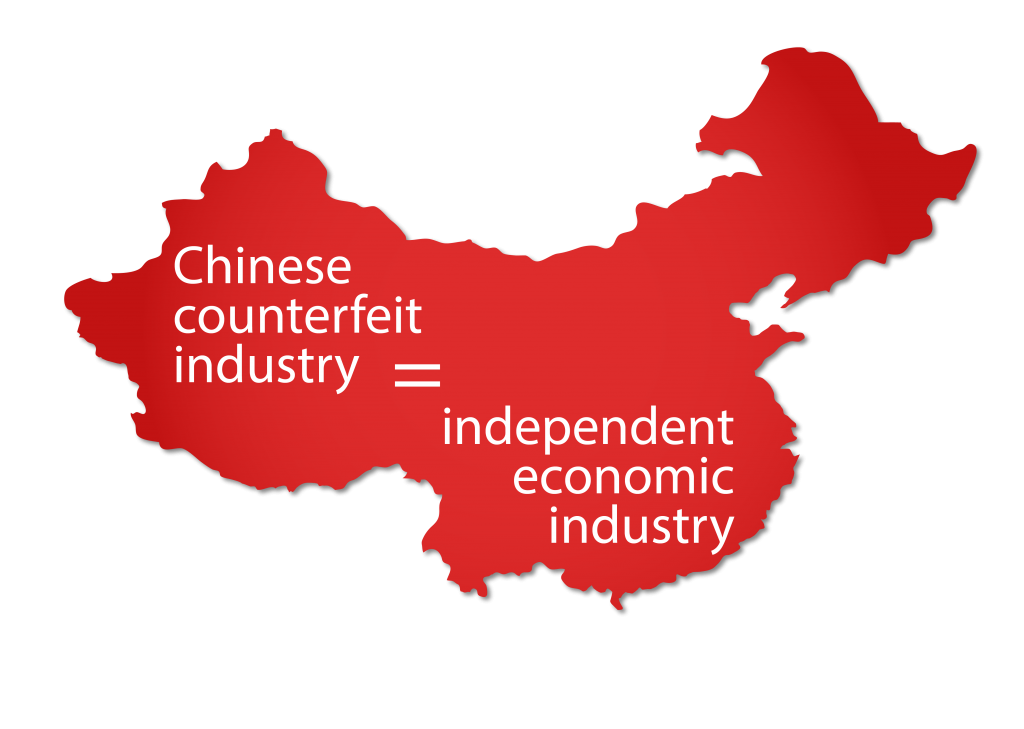Deborah Greaves
Former General Counsel, True Religion Brand Jeans
Current Partner with Brutzkus Gubner Rozansky Seror Weber LLP
Many intellectual property (IP) enforcement professionals become frustrated or even angry over the difficulty of enforcing trademarks in China. Progress appears to be slow, despite China’s recent revisions to its trademark laws and the creation of special courts for IP disputes. With its resources and controls, many expect China to do more to reduce the amount of counterfeit products it produces and ships. However, doing so under present circumstances is difficult for both economic and cultural reasons.
ANOTHER DAY, ANOTHER DOLLAR
In October 2010, many brand owners were pleased when the Chinese Government announced a nationwide Special Campaign on Cracking Down on Intellectual Property Infringements and the Production and Sale of Counterfeit and Shoddy Commodities (the “Campaign”). In addition to responding to increasing complaints from brand owners and foreign governments about the proliferation of counterfeit goods produced in China, the Campaign was also an obligatory response of China as a signatory to the TRIPs Agreement (Agreement on Trade-related Aspects of Intellectual Property Rights).
During the approximately nine-month Campaign, many brand owners reported increased cooperation from Chinese officials in their enforcement efforts, resulting in higher than usual seizure numbers. The Chinese government has continued to publicly state its commitment to IP enforcement. The subsequent impact on counterfeit statistics, however, has not been measurable.
In particular, U.S. Department of Homeland Security (DHS) statistics do not show progress. In 2010, DHS found that goods originating in China or Hong Kong comprised 80% of all seizures at U.S. ports; by 2015, this proportion had increased to 87%. Annual seizures of counterfeit goods from Hong Kong and China at U.S. ports have exceeded U.S. $1 billion in recent years — a value exceeding the GDP of more than a dozen nations. (SEE SOURCE) Moreover, this number reflects only Customs and Border Protection seizures and does not include counterfeit products that successfully enter the United States. The counterfeit industry in China is so robust that it comprises an independent economic market (IEM) operating outside of “official” channels.
The vitality of the IEM is clearly apparent at wholesale markets, where seemingly every branded product for sale is counterfeit. Sales of illicit product are so rampant that the practice appears to be institutionalized. That such blatant illegal activity thrives in a country is evidence of the IEM and an obvious source of endless frustration for brand owners. Counterfeiting enterprises support employment at the wholesale markets, which are fed by factories with their own employee base. Raw materials are sourced from local vendors, creating even more jobs. The counterfeit-market infrastructure includes warehouse and freight operations as well as other ancillary services. This infrastructure enjoys de facto exemption from labor and other economic regulations, as well as taxation.
Dismantling the IEM could damage the Chinese economy. Enforcing IP laws in China and thereby disrupting counterfeiting enterprises would create significant unemployment, causing strife and social unrest, and place a great burden on the government in assisting the newly unemployed.
CHANGING THE CULTURE
An old adage states that imitation is the highest form of flattery. Chinese culture lauds the making of close-to-perfect replicas. This culture contributes to the vitality of the IEM. Such excellence in the pursuit of copying, however, is offset by the lack of Chinese innovation. The measurable absence of innovation may help brand owners understand why there are so many challenges with China enforcement. Until one creates and nurtures one’s own innovation, there is no emotional attachment or sense of pride in ownership.

Chinese officials understand that indigenous innovation is critical to its economic development. Indeed, this is evident in China’s “National Medium and Long Term Plan for the Development of Science and Technology (2006-2020)” (the MLP), described as a “‘grand blueprint of science and technology development’ to bring about ‘the great renaissance of the Chinese nation.’” The MLP acknowledges that China is “not an economic power, primarily because of [its] weak innovative capacity. (McGregor, 2010)
Similarly, the Ministry of Finance and Commerce (“MOFCOM”), in discussing the driving force behind the anti-counterfeiting Campaign, noted:
[t]he 12th 5-Year Program will focus on scientific development and accelerating the transformation of the economic development pattern. Scientific and technological progress and innovation will be regarded as an important tool for accelerating the transformation of economic development pattern. In order to better adapt to new situations and tasks and further strengthen IPR protection, the State Council has decided to carry out this Special campaign. (King & Wood, 2010)
Is it possible that suppression of free speech, creativity, and expression in China over several decades has negatively impacted the ability for indigenous innovation? Notwithstanding, the Chinese government realizes the power of intellectual property for innovation. Achieving and maintaining a position as a world power partially depends on developing domestic technology that can be sold elsewhere or that will reduce dependence on technology of other countries.
Viewed this way, the anti-counterfeiting Campaign may have been an effort to make China a nation of thinkers and innovators rather than one of copiers. The Campaign was a first step to recondition the Chinese mindset and to institute the notion of negative ramifications to counterfeiting.
FULL CIRCLE
Encouragement of freethinking and innovation in China is liberating for creative minds. The development of Chinese domestic intellectual property will, all hope, instill a greater respect for indigenous creations as well as for foreign innovations. Though at conflict, the MLP of 2006 defines “indigenous innovation as ‘enhancing original innovation through co-innovation and re-innovation based on the assimilation of imported technologies.’” Some brand owners consider this to be a blueprint for technology theft. Herein the dichotomy lies; encouraging innovation yet defining it as an allowable IP violation.
Understanding the culture and socioeconomic influences that contribute to and support counterfeiting may help brand owners to be diligent and patient in their enforcement efforts and in understanding the current state of affairs.
THE BRAND PROTECTION PROFESSIONAL | SEPTEMBER 2016 | VOLUME 1 NUMBER 1
COPYRIGHT 2016 MICHIGAN STATE UNIVERSITY BOARD OF TRUSTEES
